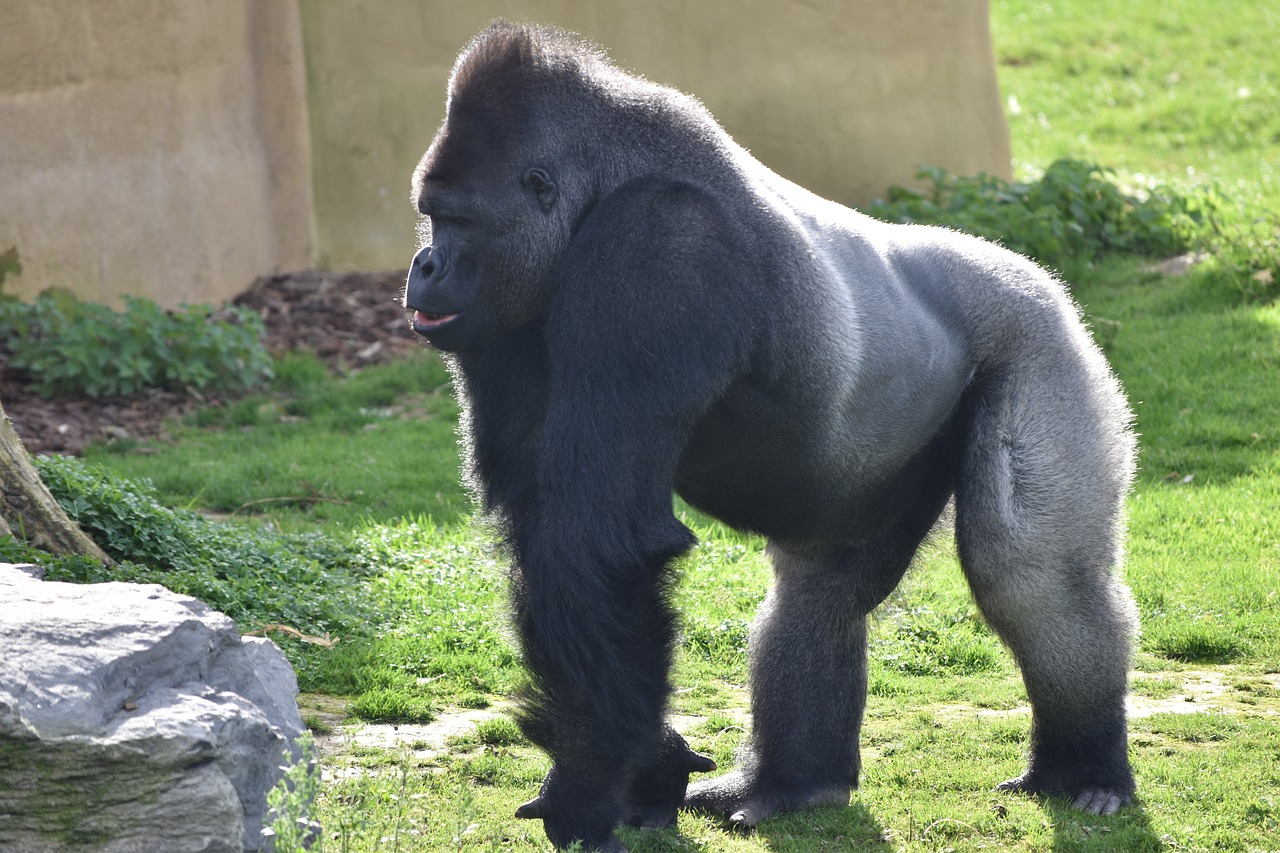JOURNEY FROM EXISTENCE TO EXTINCTION
Last Episode: THE LAST OF MOUNTAIN GORILLAS

Discovered in 1902, mountain gorillas are among the few animal species that have endured countless years of warfare. Native to the African continent, mountain gorillas have thick, long black hair with silverbacks being the strongest gorillas existing.
These mountain gorillas share up to 98% of human DNA and therefore, have numerous similar traits. For example, they are highly intelligent species that can communicate with humans using sign language, and each gorilla has a unique fingerprint.
These silverbacks also play an essential role in protecting their habitats; hence, they are titled the umbrella species of the Congo Basin. They help spread the seeds of crucial plant species in the rainforest, and as they move around, they create small clearings in the foliage, allowing more sunlight to reach sun-loving plants. This helps maintain the plant biodiversity and the health of the rainforest.
However, this effect may not last long, as only 1,063 mountain gorillas are currently alive. This is widely because of human activities and disease threats, which were initially so severe that scientists predicted that mountain gorillas would go extinct by the twentieth century.
Warfare is one of the major factors which led to the silverback's endangerment. In the early 1900s, civil unrest in the Democratic Republic of Congo and war in Rwanda sent waves of refugees into the region around the Virunga Mountains parks, home to more than half the mountain gorilla population, destroying gorilla habitat. Moreover, rebels had also taken over part of gorilla habitats, which made it difficult to carry out conservation work.
Furthermore, as humans moved into areas near mountain gorillas, they cleared land for agriculture and livestock. Even land within protected areas is not safe from clearing. For example, in 2004, illegal settlers cleared 3,700 acres of gorilla forest. Further destruction of the gorilla habitat is caused due to the extraction of charcoal. Virunga National Park is home to a massive charcoal reserve that is mined illegally, destroying the gorilla’s natural habitat.
Mountain gorillas are also vulnerable to numerous human diseases, such as the common cold, and studies have shown that a common cold can lead to the death of many gorillas. The severity of the disease increases as humans visit the gorilla forest for recreational and exploration purposes. Additionally, mountain gorillas are often caught in traps set for other animals, which can cause injuries that may be fatal.
The final major threat to the gorilla population is hunting. Mountain gorillas are hunted for their meat, which is a valuable source of food. In some places, the wealthy elite considers the consumption of ape meat prestigious, driving the demand for such meat in urban centers. The level of hunting is relatively low because of the strength of mountain gorillas, but the impact multiplies due to the low reproductive rate of the silverbacks.
Although alarmingly late, the world is attempting to help the mountain gorillas live longer.
World Wildlife Fund (WWF) works in Virunga National Park to reforest, fund anti-poaching patrols, and collaborate with local communities. They also created a song called "Song Les Gorillas des Montagnes" to raise awareness about mountain gorillas and emphasize eco-tourism. WWF also collaborates with the government of Congo on projects to save forests.
In Rwanda, the Fossey Fund also has dedicated anti-poaching teams, which patrol specific sectors of the gorilla habitat to look for and guard against illegal activities in the forest, especially poacher activity, such as snares set to entrap animals.
Such conservatory measures have allowed the mountain gorilla population to stabilize, but the habitat loss and illegal hunting require long-term attention and law enforcement. Hence, it may take years for the population to recover.
Similar Post You May Like
-

CFCs, HFCs and their long, troubled history
At its peak, the ozone hole covered an area 7 times larger than the size of Europe, around 29.9 million km2, and was rapidly expanding
-

The Origin of Universe: Deciding point where it all began!
Let us unravel and surf through the ideas throughout ages to understand what the universe and its origin itself was to its inhabitants across history.
-

The Artemis Program
Inspired by the Greek goddess of the Moon, twin sister to Apollo, the artimis program was named on 14 May 2019 by Jim Bridenstine.






